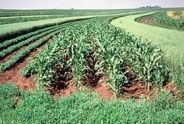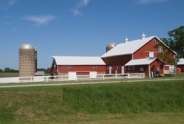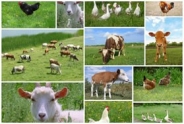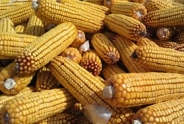Consider Planting Winter Wheat After the Hessian Fly-Free Date
Joshua Putman, Field Crops and Forage Specialist
Southwest New York Dairy, Livestock and Field Crops Program
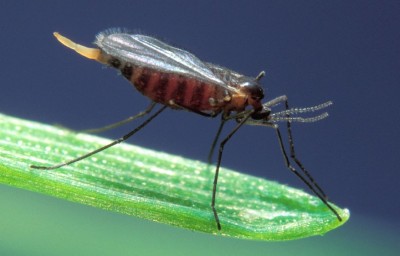
As fall approaches, growers should consider the recommended timing for planting winter wheat. For years, the standard recommendation for profitable wheat production in New York has been to plant wheat after the Hessian fly-free date. This recommendation is based on the fact that Hessian fly adults would no longer be alive as there are no remedial measures available to save an infested crop. An article prepared by Ken Wise, with the New York State Integrated Pest Management Program, discusses the recommend timing to plant wheat to avoid injury from the Hessian fly as well as a detailed description about this pest. For more information about winter cereal production, contact Josh Putman at 716-490-5572 or jap473@cornell.edu.
Hessian fly, Mayetiola destructor, is a species of fly that is a significant pest of cereal crops including wheat, barley and rye. Hessian flies emerge in late summer, mate, and then lay eggs in different types of grasses - among them wheat. The adult life span is extremely short, perhaps only a week, during which time they do not even feed. After this short time span, adults die off.
The larvae of this small insect feed between the stem and leaf sheath near the base of the plant in newly established wheat in the fall and again in the spring. Damage during the fall causes stunting of the new plants; the spring and early summer damage results in unfilled heads and fallen straw. Look for the small white maggots and brown puparia (the resting stage, commonly called "flax seeds", for their resemblance to the flat spindle- shaped seeds of flax) deep within the sheaths of the lower leaves in the weeks just before wheat harvest.
The fly-free date is set at a time when it is expected that the adults have died and are no longer around the area. As a result, damage caused by this insect will likely be much less if wheat is planted after the specific fly-free date in your area. Note the dates shown on the map are adjusted for altitude (i.e. higher elevations = earlier Hessian fly-free dates). The recommendation is to plant wheat only after the fly-free date for your area but as soon after that date as possible. In Southwest NY, the fly-free date ranges from August 29th - October 6th, depending on county and elevation. In general, September 15th has been a good starting point in Western NY.
Field Crop Chronicle - 9/10/20 (pdf; 1093KB)
- Hessian Fly
Upcoming Events
Memoir Reading: Barn Gothic
December 4, 2025
Bath, NY
Barn Gothic is an elegy for family farmers and an intimate portrait of three generations laboring to be fathers and sons while their livelihood falls apart. Beautifully told with a farmer's restraint and a poet's grace, it is a story of personal loss amid corporate corruption and of finding a way forward when everything you know disappears.
NY Small Farms Summit 2025: Stronger Together
December 5, 2025
Alfred, NY
We hope you will join us on December 5th for the 2025 New York Small Farms Summit! This is an opportunity to meet other farmers and ag supporters, learn about research and education projects, and set priorities for future efforts to grow small farm success.
At the Allegany County site, we will focus on giving trees a chance and how trees build resiliency on small farms. Whether attracted to fruit, nuts, vegetables, fodder or shade, trees can be an integral part of a successful farming system. Join us as we explore the opportunities for resiliency that come from adding tree crops or managing wooded areas of your farm for agroforestry or silvopasture systems.
Crops, Cows & Critters - Southwest New York Dairy, Livestock & Field Crops Newsletter Sponsorship
December 19, 2025
Our two forms of publications feature research-based and timely information from our four specialists, listed to the right, along with local event notifications and Cornell University outreach. This information is provided to participants who range from dairy, livestock, and field crops producers to agricultural suppliers and consultants.
Weekly Email Update: Shared with 625+ households who have signed up with our program.
Monthly Paper Mailer: To reach our stakeholders and farmers who lack internet access, we send out a monthly mailer where your company's logo and contact information would be featured with a mailing list of 330+ households.
If you sponsor our weekly and monthly publications you reach approximately 955 households.
Visit our website to view our newsletters!
Announcements
No announcements at this time.

